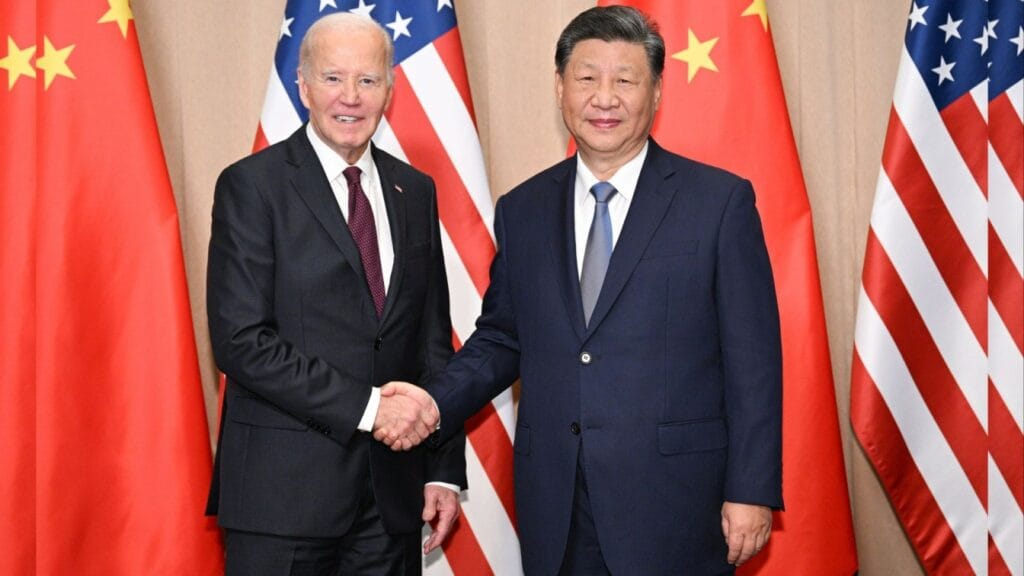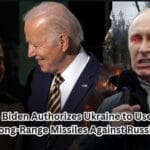A sidelight of the APEC summit in Lima, Peru, has seen Chinese President Xi Jinping and US President Joe Biden take time to discuss how the relationship between the two superpowers will play out in the future. It would probably be their last formal exchange before his term runs out.

Xi began by acknowledging how the relationship between the US and China was hammered out over the past few years. He admitted to experiencing the “ups and downs” of their interactions, but made it clear that despite all the tensions, the relationship had remained “largely stable.” In his signature diplomatic lingo, Xi reassured Biden that China is prepared to cooperate with the new administration, even Donald Trump, who is poised to return to the Oval Office in January. He accepted that China was willing to manage their differences and find ways to work together for the good of both countries.
The US President, Biden, said that the US-China relationship was one of the most important “relationships” between any two countries in the world. While his word choice was second-guessed, almost midway through the sentence—from “alliance” to “relationship”—the feeling was clear, these two nations hold the balance of power in their hands, and their cooperation or conflict will shape global dynamics for years to come. Biden also insisted that it’s very important not to give the competitors an excuse for spilling over into conflict. He referred to the last four years as proof that this relationship, though at times strained, could be kept from leading to open hostilities.
However, the conversation did not gloss over the serious issues that divide the two countries. Tensions between the US and China have been mounting for years, fueled by incidents like former US House Speaker Nancy Pelosi’s visit to Taiwan in 2022 and a Chinese spy balloon drifting over US airspace in 2023. While the situation has stabilized somewhat, significant disagreements remain—especially regarding Taiwan, technology access, and military cooperation with Russia.
Key Agreements and Differences
The two leaders during their talks discussed several areas of cooperation. One major outcome is the agreement to maintain human control over the decision to use nuclear weapons. According to US National Security Adviser Jake Sullivan, this is a revolutionary pledge from China because China, for the first time in history, commits itself to it. This is more than symbolic, it means the two states have a deeper recognition of the effect that both countries must take multiple steps in dangerous management from security, which threatens the world from a global catastrophe.
Going to the negatives of the meeting, also pointed to some critical areas where the two nations are far from aligning. There was also some discussion of the lingering tensions on trade and technology issues, Xi Jinping expressed annoyance at the United States’ so-called “small yard, high fence” policy, targeting China’s access to advanced technologies, especially semiconductor ones, that are essential for future economic growth, he also accused the world of economizing with that alarming “decoupling” trend that is dividing economies and can now eventually break up the integrated marketplace.
READ MORE | China Escalates Pressure on Taiwan with Live-Fire Drills
Chinese state media says that Xi went on to outline four “red lines” for the US – Taiwan, democracy and human rights, the Chinese political system, and the country’s economic development. These are the red lines that cannot be crossed, even if a minor threat to any of them would utterly ruffle the US-China rapport.
The Trump Factor: What Will the Return of the Former President Mean?
As Biden’s term winds down, everyone is now watching the new administration that comes in to look back at the Trump attitude toward China. Trump has never minced his words over Beijing and has already signaled moves to reinstate high-level tariffs on Chinese goods while making other demands on China to widen trade imbalances. With politicians such as Mike Waltz and Marco Rubio both of whom have recently emerged as vocal critics of China likely taking key roles in the next administration, Trump’s policies are more than likely to be anything but conciliatory toward China.
READ MORE | Mike Waltz Selected as Trump’s National Security Advisor
Then there is Elon Musk, with his tightly bound business relationship in China through Tesla. Will such figures shape Trump’s position so it becomes softer? Musk’s net result to balance out his associations with China and the winnings with that region may force him to soften his stance, but that’s still to be determined.
What’s Next?
The future of US-China relations remains uncertain. While Xi and Biden agreed on the need for continued communication and cooperation, much work will be required to do so. The return of Trump could further complicate things if his administration pursues aggressive trade measures or military action related to Taiwan.
However, in this meeting, at least one thing is the intention of both parties to sit and engage in discussions. Though different, both leaders seem to understand that management of these differences without conflict will be great. But as always, the challenge will lie in the translation of these discussions into concrete action.
Final Thoughts and What’s Next?
I think that, although the US and China will have their differences, this dialogue still hints that both parties don’t want anything too extreme. The fact that they agreed on nuclear weapons control is a small but helpful step, and more of these should start popping up. I don’t think anything extraordinary is going to happen shortly, especially with Trump bringing his confrontational attitude.
Do you agree? Is the US and China likely to avoid a war in the coming years, or should we just go ahead into more tension? Share your thoughts in the comments below. Let’s get the discussion going.
Minutes by M31GlobalNews






